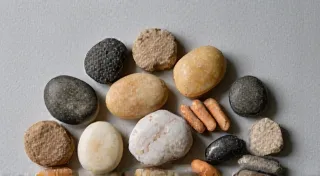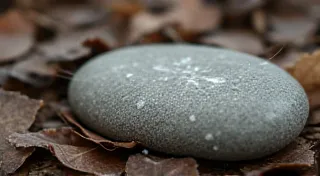Melon's Labyrinth: Navigating Soil Health for Exceptional Watermelon Yields
There's a peculiar romance to heirloom varieties. It’s a connection to the past, a respect for the slow, deliberate work of generations who refined these plants, coaxing the sweetest, most flavorful fruits from the earth. It’s similar, I think, to the feeling I get when I hold an antique accordion. Each button, each reed, a testament to the craftsman's skill and the performer's passion. They weren’t built for disposable convenience; they were meant to last, to be cherished, to tell stories. And heirloom watermelons, with their intensely flavored flesh and unique histories, deserve the same reverence.
Many gardeners focus on the visible aspects of watermelon growing – the planting, the watering, the pest control. But the true key to exceptional yields of these treasures lies beneath the surface, in the often-overlooked realm of soil health. It’s a subterranean exploration, a journey down nutrient pathways that directly impact the sweetness, size, and overall vitality of your melons. Think of it as uncovering the silent language of the earth, the subtle cues that signal whether your watermelons are truly thriving.

The Historical Tapestry of Watermelon Varieties
Before we delve into the soil science, let’s appreciate what we're working with. Heirloom watermelons aren't just about taste; they're about history. Varieties like ‘Black Diamond,’ dating back to the 1830s, were prized for their deep, almost black rind and incredibly sweet, crimson flesh. ‘Speckled Beauty,’ with its unique mottled pattern, was a favorite in the Victorian era. These weren't mass-produced for uniformity; they were cultivated for their individual character, their regional adaptations, and the stories they carried.
My grandfather, a man of few words but immense wisdom, grew ‘Charleston Gray’ watermelon every summer. He wouldn’t talk much about the process, just quietly tending the vines, almost as if he were performing a sacred ritual. He’s gone now, but the memory of that cool, sweet watermelon on a hot August day, the faint scent of the earth clinging to it, remains a potent reminder of the simple pleasures in life – pleasures that are inextricably linked to the health of the soil.
Understanding the Soil Food Web
Soil isn't just dirt; it's a complex ecosystem – a ‘food web’ teeming with life. Bacteria, fungi, nematodes, protozoa, earthworms, and countless other organisms work together to break down organic matter, release nutrients, and create a living, breathing environment for your watermelon plants. Healthy soil is alive. It hums with activity. And a healthy food web is the foundation of robust watermelon growth.
Think of it like this: your watermelon plant isn't just taking nutrients *from* the soil; it’s participating in a symbiotic relationship *with* the soil. The plant provides sugars to the microorganisms, and in return, those microorganisms unlock essential nutrients like nitrogen, phosphorus, and potassium – the building blocks of healthy growth and delicious fruit.
Key Soil Health Indicators for Watermelon Success
So, how do you assess the health of your soil? Here are a few key indicators:
- Earthworm Activity: A good sign of healthy soil. The more, the better.
- Soil Structure: Healthy soil should be crumbly and well-aerated, not compacted or clay-like.
- Dark Color: Dark soil typically indicates a high organic matter content.
- Smell: Healthy soil should smell earthy and slightly sweet, not sour or musty.
- Water Infiltration: Water should soak into the soil quickly, rather than pooling on the surface.
Building a Thriving Subterranean Ecosystem
Now for the practical steps. Here’s how to nurture that subterranean ecosystem and pave the way for exceptional watermelon yields:
- Organic Matter is King: This is the cornerstone of soil health. Compost, well-rotted manure, leaf mold, and cover crops all contribute organic matter. Spread a generous layer of compost around your watermelon plants each spring.
- No-Till or Reduced-Till Practices: Tilling disrupts the soil food web, killing beneficial microorganisms and damaging soil structure. Minimize tillage whenever possible.
- Cover Cropping: Plant cover crops like rye, oats, or clover in the fall to protect the soil from erosion, suppress weeds, and add organic matter when they are incorporated back into the soil in the spring.
- Mulching: Mulch with straw, wood chips, or shredded leaves to conserve moisture, suppress weeds, and regulate soil temperature.
- Avoid Synthetic Fertilizers: These can harm beneficial microorganisms and disrupt the natural balance of the soil. Rely on organic amendments instead.

Restoration and Reverence: Connecting to the Past
Caring for heirloom watermelons is more than just gardening; it's an act of preservation. It’s about honoring the generations who came before us, who understood the importance of nurturing the land and preserving these unique varieties. It’s similar to restoring an antique accordion. Each careful repair, each meticulous cleaning, is an act of reverence for the craft and the history embedded within the instrument. You’re not just fixing something; you’re reconnecting with the past.
The same care and attention should be given to the soil. Observe it, listen to it, and nurture it. By understanding the intricate dance of the soil food web, we can unlock the full potential of our heirloom watermelons and experience the true joy of growing truly exceptional fruit – fruit that tastes like sunshine, history, and the earth itself.
The Subtle Art of Patience
Building healthy soil takes time – often several seasons. Don’t expect overnight miracles. Embrace the process, observe the changes, and adjust your approach as needed. Just as a master accordion player hones their skills over years of practice, so too does the art of soil stewardship require patience, persistence, and a deep respect for the natural world.






